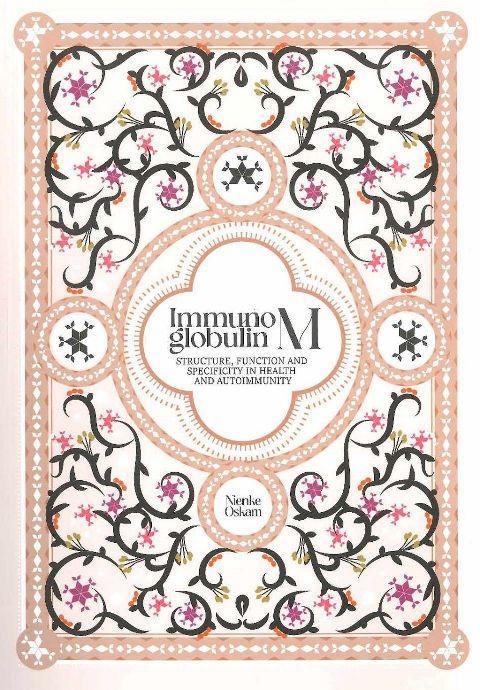Thesis Nienke Oskam
On 28 March 2024 Sanquin researcher Nienke Oskam defended her PhD thesis Immunoglobulin M: Structure, function and specificity in health and autoimmunity at the University of Amsterdam.
Promotor: Prof S Marieke van Ham PhD
Copromotor: Theo Rispens PhD
Venue: Agnietenkapel, Universiteit van Amsterdam
Abstract
Immunoglobulin M is the first antibody to be expressed during immune responses, but is also crucially important in maintaining immune homeostasis. This is evidenced by studies that have shown that a failure to produce IgM leads to an abrogated IgG response and to development of autoimmune diseases. Despite these immunoprotective roles, certain pathologies are marked by the presence of IgM autoantibodies or paraproteins, such as Rheumatoid Arthritis (RA) and Waldenström Macroglobulinemia (WM) respectively. Here, the generally self- and polyreactive nature of these antibodies may instead prove detrimental and aggravate inflammation. It is currently unclear what separates these pathogenic IgM (auto)antibodies from their naturally occurring counterparts.
The aim of this thesis was, on the one hand, to characterize structural aspects of antibodies, IgM in particular, and determine the ways these aspects affect their function and possible pathogenicity, with focus on complement activation. Notably, we found that in healthy individuals virtually all IgM circulates as a pentameric molecule in complex with J-chain and CD5L, whereas IgM lacking either seems to be a feature of disease. An additional aim was to characterize the repertoire of a classic (IgM) autoantibody, the rheumatoid factor (RF), in different immune contexts. We show that RFs derived from healthy donors and patients with RA and Sjögren’s disease all target distinct areas on the IgG-Fc. RF responses were further studied in the context of vaccination and infection, poly- autoimmunity and pre-clinical to early onset RA.
Chapters
Chapter 1
General introduction
Part I: structure and function of (IgM) antibodies
Chapter 2
At critically low antigen densities, IgM hexamers outcompete both IgM pentamers and IgG1 for human complement deposition and complement-dependent cytotoxicity abstract
Chapter 3
CD5L is a canonical component of circulatory IgM abstract
Chapter 4
Characterization of monoclonal IgM in Waldenström Macroglobulinemia
Chapter 5
Factors affecting IgG4-mediated complement activation abstract
Part II: Rheumatoid factor responses in health and autoimmune disease
Chapter 6
Identification of clinically and pathophysiologically relevant rheumatoid factor epitopes by engineered IgG targets abstract
Chapter 7
Rheumatoid Factor repertoire profiling reveals distinct binding epitopes in health and autoimmunity abstract
Chapter 8
Longitudinal rheumatoid factor autoantibody responses after SARS-CoV-2 vaccination or infection
Chapter 9
Different rheumatoid factor binding patterns distinguish between primary and RA-associated Sjögren’s Disease
Chapter 10
Next-generation rheumatoid factor assay provides improved predictive power for the development of arthritis in patients at risk
Chapter 11
General discussion
Download
Download PhD thesis (university repository)
